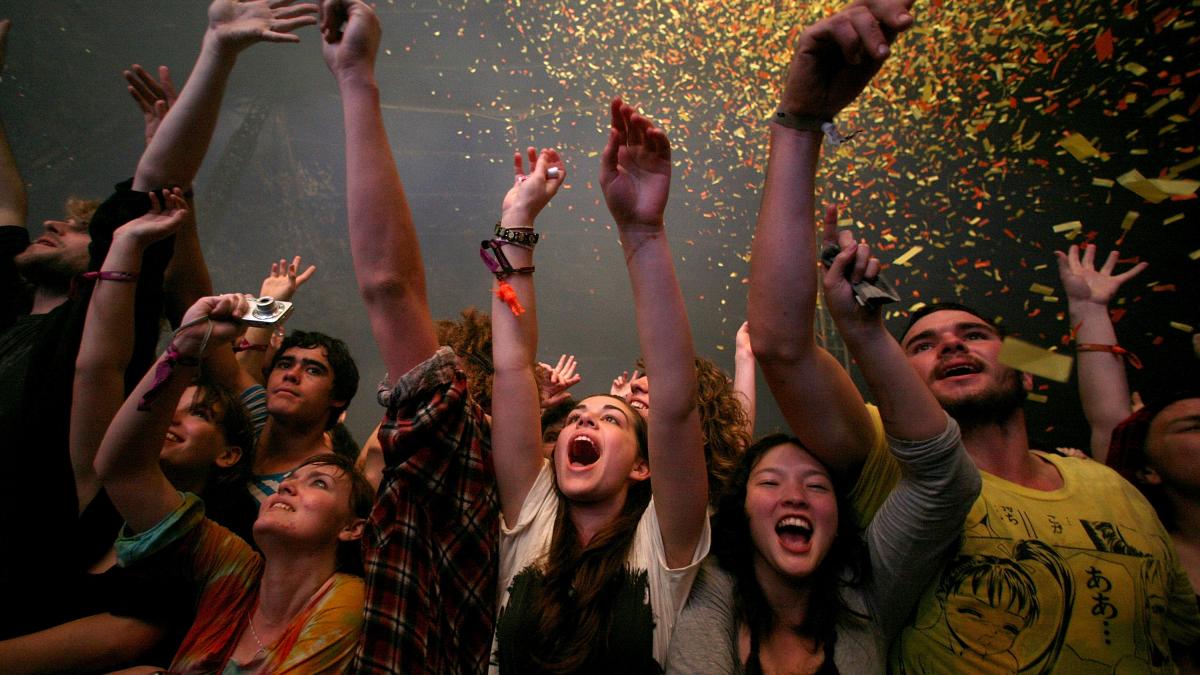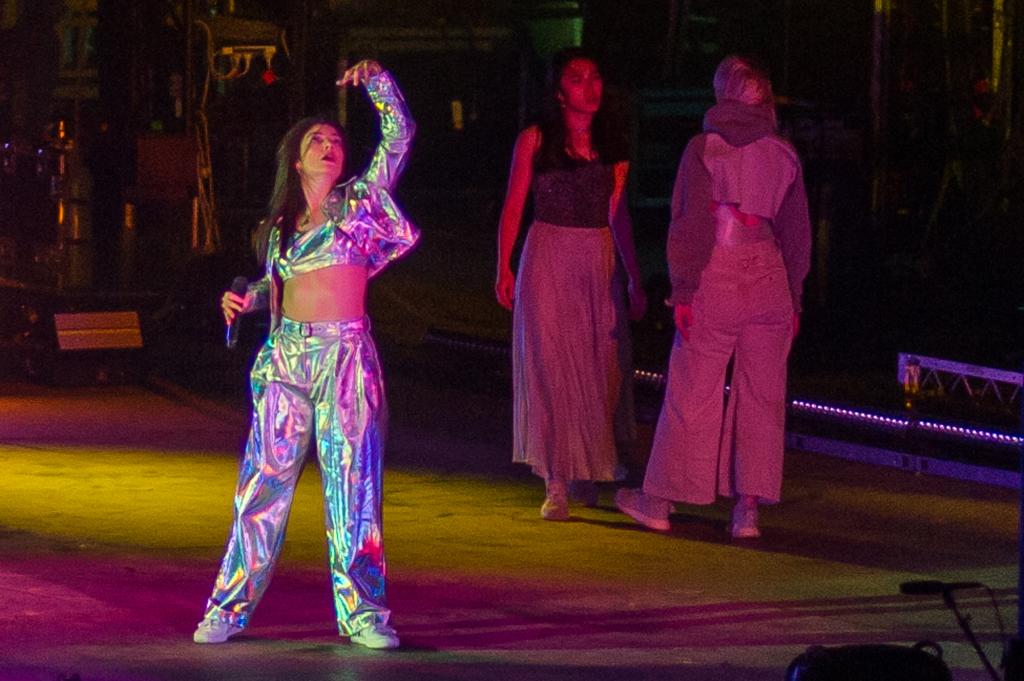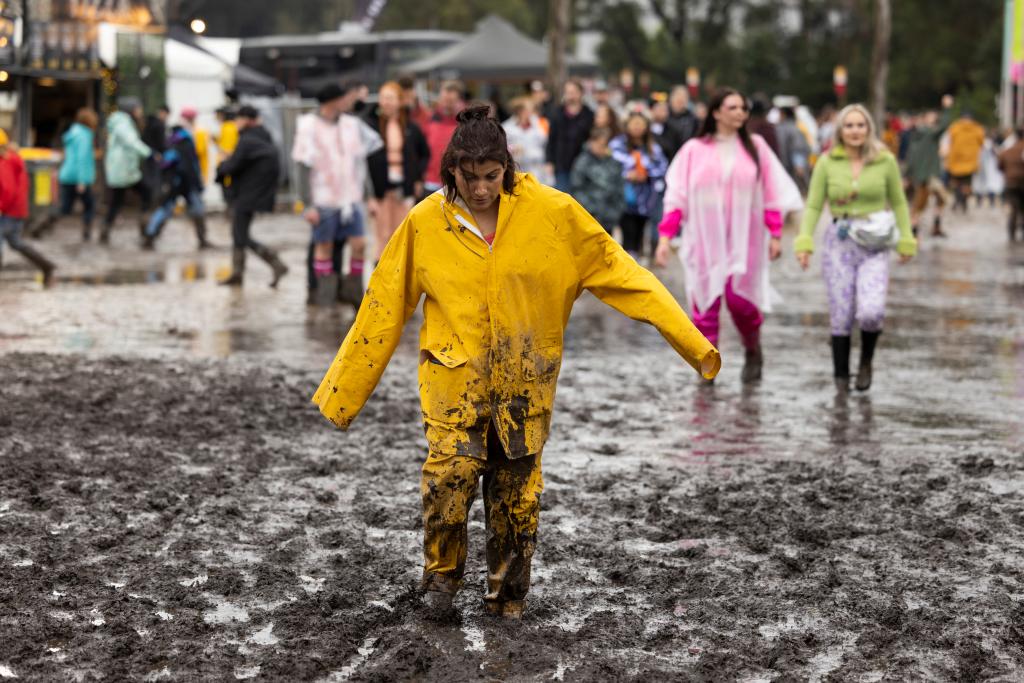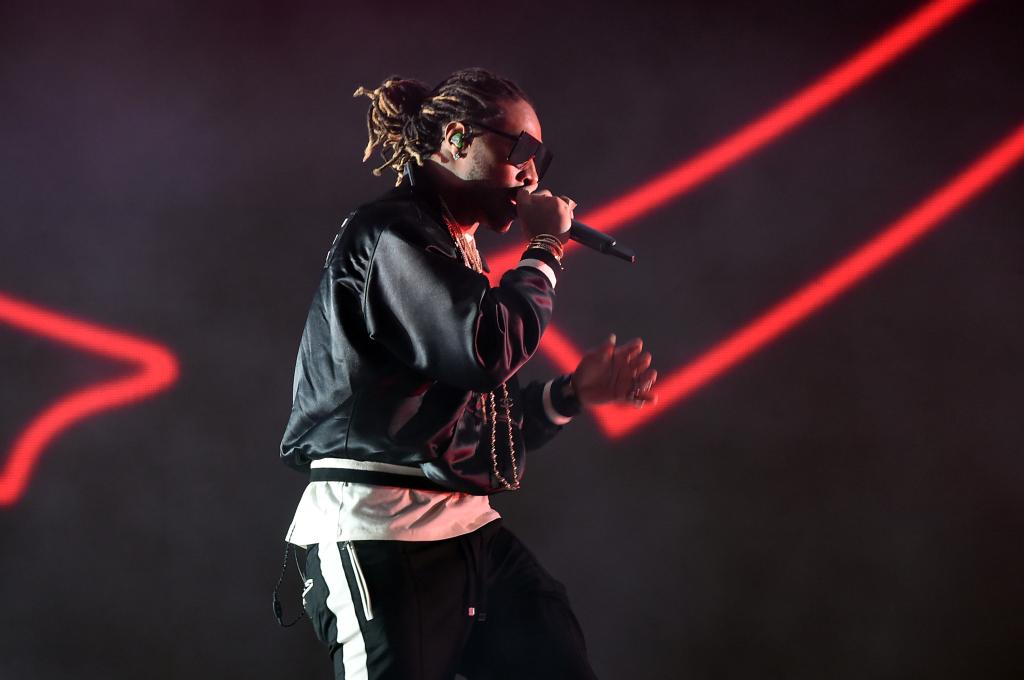
I attended my first ever Splendour in the Grass in 2017. I know it’s cliched, but the only way to describe it was pure magic. As an eager 19-year-old, I meticulously planned my schedule, my knees wobbled at my first sight of the lantern-lit amphitheatre packed with thousands of sweaty punters, and naturally, I lost my mind to every single set I saw. It was also Swift-mania-like hard to nab tickets.
While I had grown up attending shows weekly and had cut my teeth as a festival-goer at events like Soundwave and Laneway, Splendour felt like a next-level rite of passage as a music fan. I attended again in 2018 and 2019, which were both equally phenomenal experiences.
Seeing New York act Charly Bliss completely rock the GW Mclennan tent at 11am on day three, Wolf Alice shred the mainstage with their noisy, shoegazey guitar pop and of course, and witnessing Lorde end the Melodrama era as a headliner will forever remain core memories for me.

When I heard the news of Splendour’s cancellation today, I was concerned at what it meant for our industry at large — especially since many other huge events have faced a similar fate recently.
Organisers stated its cancellation was due to “unforeseen circumstances” in a vague Instagram post. While there are an array of economic and logistical reasons that directly explain why the festival climate is so dire, I believe there are a few important social indicators that can help explain things.
Because ultimately, the music industry at large is a culmination of commerce and culture.
Let’s talk about “The Vibe Shift”
In 2022, The Cut published an article called “A Vibe Shift Is Coming” which ultimately signified the ushering out of millennial culture and ideas, and the incoming dominance of the Gen Z-psyche.
In my opinion, Splendour’s cancellation is yet another signifier in this major cultural shift. Alongside the death of Pitchfork, Coachella’s record low and slow ticket sales and Groovin The Moo’s low ticket sales, it’s yet another indicator of mainstream ‘indie’ festival culture’s slow and painful transition (and death).
The kids primed for Splendour this year came of age in the midst of COVID lockdowns. Attending music festivals as a young adult with mates likely didn’t cross their minds as they celebrated their 18th birthdays by watching a Travis Scott concert on Fortnite. It’s more like Vanessa Hudgens’ cringe-inducing “people will die it’s inevitable” video (which she posted in relation to Coachella’s 2020-postponement) comes to mind when thinking about festival culture for these kids. Either that or, the gaudy fast-fashion faux-bo-ho outfits that have dominated events of the like.
Does the thought of sleeping in a rickety Kmart tent for four nights in the midst of a freezing Byron winter appeal to the generation who are drinking less than ever before? Probably not.
Additionally, Splendour’s 2022 mud disaster, the Astroworld casualties, recent events at Pitch Music & Arts festivals, conversations around crowd behaviour, and reports of aggressive police presence at events like this have probably left a sour taste in young people’s mouths about events of this scale.

This isn’t to say Gen Z aren’t into live music. Concert and rave culture is huge on TikTok — but festivals? Not so much.
Lineup woes
While the costs of securing high-profile and hyped acts can be to blame, I do believe there may be a general disconnect between the old guard of the music industry and the punters who they are organising events for.
I was personally stoked about the Splendour lineup this year. However, do 18-year-olds care about Arcade Fire? They weren’t even a year old when their first album came out. I’m not saying Gen Z don’t listen to artists from before their time (i.e. acts like Deftones, Duster, Pavement and The Strokes are all huge amongst the demo), but I would say Arcade Fire doesn’t have enough appeal beyond the niche music nerds in the age group.
The idea that Gen Z is genre-agnostic is flawed. Yes, they do listen to “everything”, but it’s the same type of “everything.” For example, you’ll likely find Yeat, TV Girl and Omar Apollo (all vastly different sounding acts, however, they’re all “moody and angsty”) featured all on your local alternative teen’s playlist these days. But honestly, those kids probably consider themselves way too cool to attend an event like Splendour. That kid is definitely not also listening to Middle Kids, Tash Sultana and G Flip.
Future is undeniably iconic. He’s a hip-hop pioneer and his influence in the genre is astounding. But, your average surf rock enjoyer probably doesn’t care beyond ‘Mask Off’.

While the rock-heavy lineup featured post-punk acts like Fontaines DC, Viagra Boys and Yard Act, that same crowd would probably consider hardcore luminaries Turnstile — who were tapped for an exclusive set, to be ‘fake’ punk.
Social media can be an amazing tool for music discourse and discovery, but the TikTok and Twitter SITG lineup predictions this year revolved heavily around names like Boygenius, Doja Cat, Lana Del Rey, Mitski and of course, Fred again… When the lineup didn’t live up to that false expectation, people were let down by their own ideas of what the festival should be.
When your audience is “everyone”
Splendour lineups historically have reflected the old-school Triple J alternative rock culture. Over the last few years, discussions of whether this ‘culture’ resonates with young folks anymore have buzzed across the internet.
A pop culture ‘monoculture’ hasn’t existed for a long time. With influences like TikTok, online communities like Discord, the rise of curated DSP playlists and the decline of traditional outlets like radio and blogs, our culture is more fragmented than ever before. Everyone has a different idea of what’s actually popular because of this.
The 2017 lineup featured acts like Queens Of The Stone Age, LCD Soundsystem, HAIM, Sigur Ros and The XX, as well as Aussie acts like Julia Jacklin, Amy Shark, Confidence Man and King Gizzard And The Lizard Wizard. With a balance of established indie mainstays (akin to Arcade Fire, The Kills and Fontaines DC) and Aussies (Tash Sultana, Tones And I and Allday) I feel this lineup would’ve faced a similar fate to this year’s.
Festivals that tap into subcultures prove that it’s not all bleak for the Aussie live music scene. For example, Souled Out festival — which took place, featuring acts like Summer Walker, Bryson Tiller and PartyNextDoor — quite literally sold out in minutes. Attracting 10K punters in Parramatta Park, the festival served a niche group of fans.
Each act was either making their debut Australian performance, or hadn’t hit the market in at least five years. The modern R’n’B genre isn’t one that gets any love from Triple J, or commercial radio in Australia, nor does it get much media attention at all. But, there’s a large group of folks who are clearly hungry for an event that genuinely reflects their taste and values.
Similarly, the recently wrapped first edition of New Bloom — an emo, hardcore and pop punk-focused festival — proved that honing in on subculture and curating an experience for the archetypal kind of fan of a genre is a pathway to success. Back On The Map, Good Things and Knotfest are also emblematic of this kind of event.
Where to next?
It is sad that Splendour is cancelled — for the Aussie artists who were set to make their debut, the organisers and the punters.
Even if you don’t attend, it’s always exciting when this many international acts touch down in the country at the same time. The sideshows are always fun if you can’t make the trek to Byron, sets go down in history as career makers, and meme-worthy moments from punters always provide a nice morale boost during this time which can often feel hopeless and sombre.
Hopefully, this moment isn’t taken lightly by the government and a serious, respectful and sustainable helping hand is given to the arts industry at large.
The author of this piece is known to PEDESTRIAN.TV but wishes to remain anonymous.
Image source: Getty Images / Graham Denholm/WireImage



